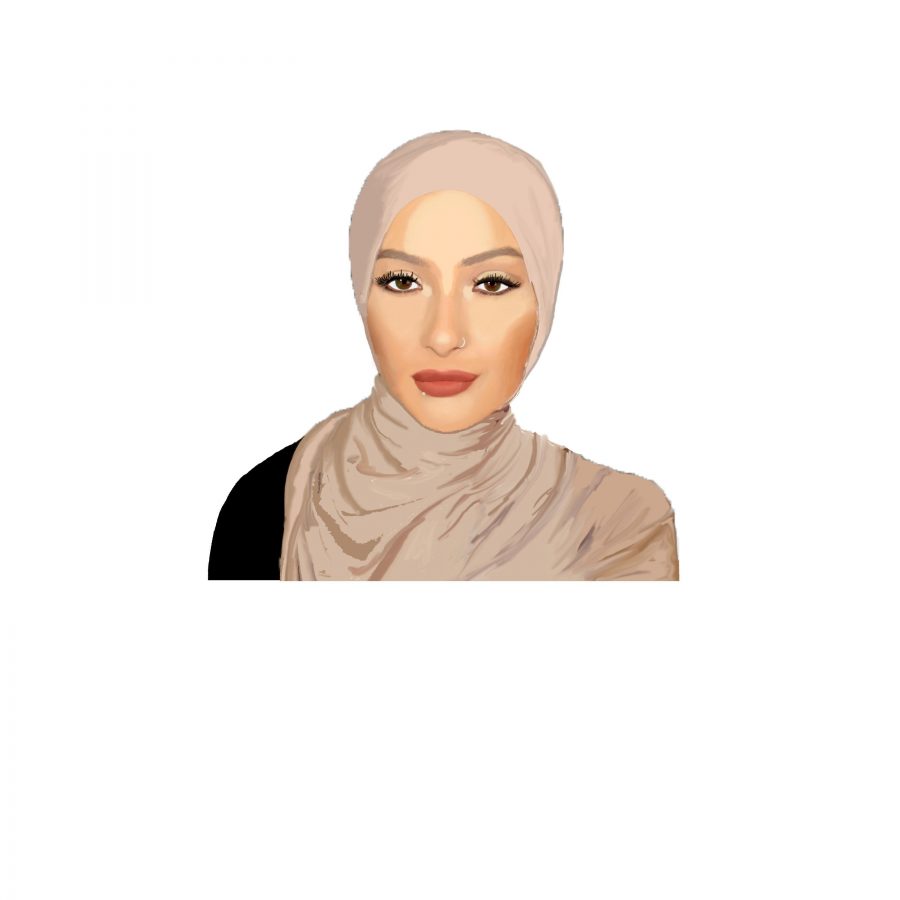Recently, great strides have been made in the high fashion world by Hijabis, or women who wear the hijab, a traditional Muslim headscarf. Recently, several Muslim women have been creating makeup tutorials, and showing them off online as beauty gurus. One of these women is Nura Afia, who has just been chosen by Covergirl to be one of their brand ambassadors.
Despite the fact that Muslim people spend more money on clothing and footwear than all of Japan and Italy combined, they don’t usually break into the mainstream as far as modeling is concerned. “In the past….everybody would be dressed more modestly, so it would only be the scarf that was different. But now, they might not be considered on-trend,” Senior Misbah Mamoon said, who is Muslim and wears a hijab. Mamoon thinks this is probably because of the current fashion trends being more revealing than in past decades, as Muslim women are supposed to dress modestly. Afia is also not the first woman to ever model wearing a hijab. Mariah Idrissi modeled for H&M last year.
Though the reason for why may differ, Tamites across the board have agreed that this is a positive addition. “It’s about time,” said AP Compisition teacher David Tarpinian. “I’m glad that that sort of role modeling for society is open and out there,” history teacher Luc Chamberlin said. “I think this is just another step in the right direction for this company,” senior Sam Novick said.
Profe Rahimi Lopez, a new Spanish teacher at Tam, was born and lived the first year of her life in Iran, where the entire female population was forced to wear what are called, “chadoors” to cover their hair completely. Though a lot of her family does not believe in wearing the head covering at all, Rahimi Lopez discovered something when studying abroad in Morocco, where it is illegal to force head coverings, “I was able to talk to two women, one of whom chose to wear the headcovering, and one of whom didn’t. And they felt more free about that. I feel like once it’s a choice, then it does become about representation, and it becomes about being able to be free to be your own identity in public… In general, those extremes of either banning something or requiring something are where we get in trouble, because then it’s encroaching on people’s personal decisions.
Mamoon seemed to agree. “I think it’s just as important for girls to be comfortable in whatever they choose to wear, and not have to feel the pressure of society to dress in a certain way,” she said.
Senior Ariana Agnew also addressed the aspect of objectification in media, “There’s kinda this stigma surrounding models where it’s about sexualization. Having a hijabi woman as a covergirl is saying it’s not just about their bodies, or them being sexy. It’s not just them representing this minority in America who has been really targeted lately, it’s also representing them in a way that’s empowering women,” Agnew said.
This is also an important move to portray Muslim women in a new light opposed to their usual characterization of submissive wives of terrorists. Afia is normal, and to have a Muslim represented as thus, is very important. “I think it’s good [because] it’s kind of hard when a lot of the stuff we see in our culture is a very basic society’s version of a ‘pretty girl’, or what a girl is supposed to wear,” senior Jack Simpson said. Covergirl is sold mostly in drug stores, and many girls first start getting their make there. Mamoon also thinks that it can be helpful for people who don’t usually see muslim people. “Here it’s normal, but in other places [it is not.]…[and]seeing this in a public setting will help [others] realize we’re regular people,” she said.
That doesn’t mean that there is no risk in Covergirl doing this. Tensions in America regarding Muslim people are high, with a 67 percent increase from 2014 to 2015 in hate crimes. When the only thing on TV is about muslims being terrorists, it hurts young muslims. While this isn’t a tv show, many young muslim girls care about fashion, and are only given non-muslim models and fashion icons to look up to. If they are just seen as something that some americans wear, people may be less scared. “It’s really cool what she’s representing, especially with Trump becoming president, a lot of people have been really anti muslim, so the fact that Covergirl is like “Here’s a muslim model,” it’s kind of showing the United States, “we are still one, and we should accept everybody despite the radical changes that are going on.” said senior Kate Delong. ♦


